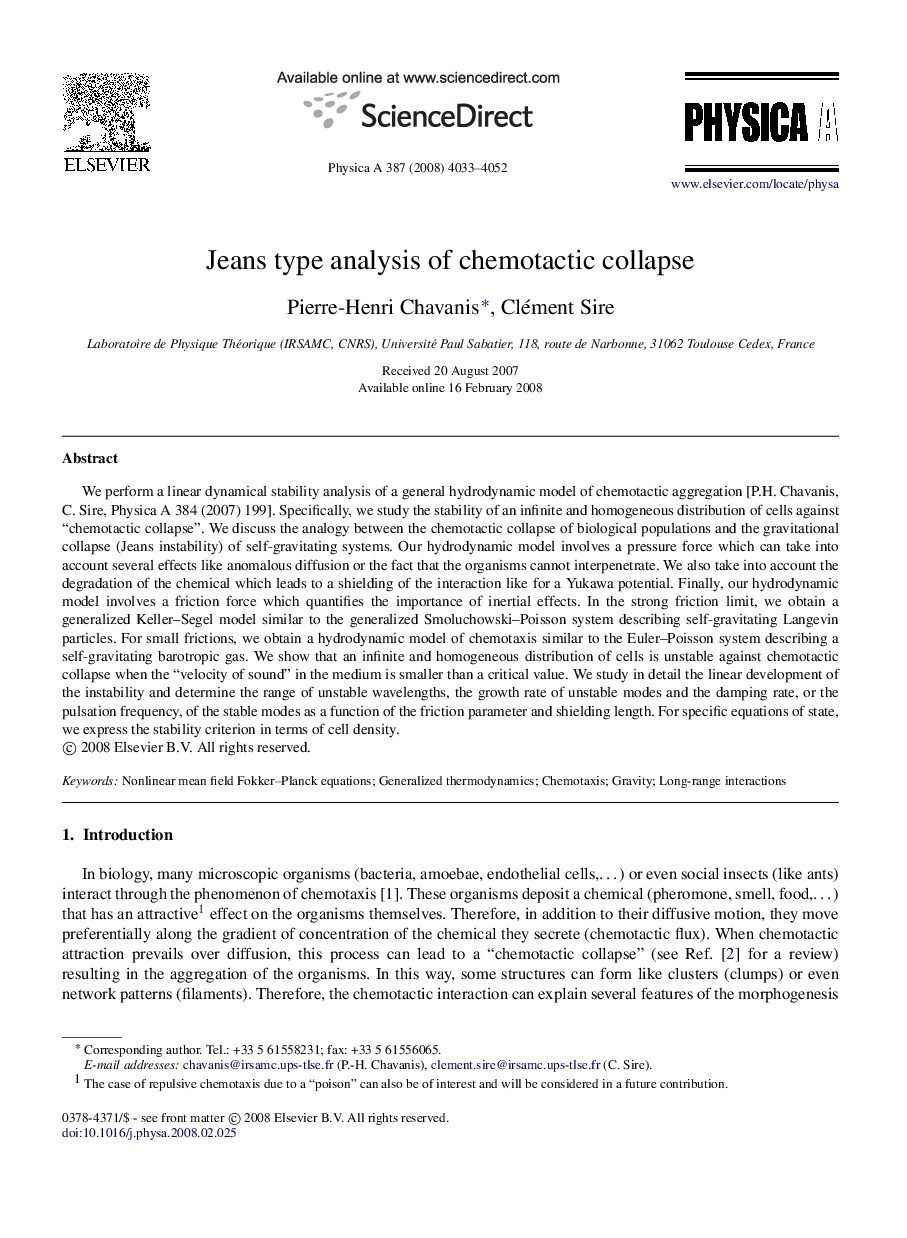| Article ID | Journal | Published Year | Pages | File Type |
|---|---|---|---|---|
| 977930 | Physica A: Statistical Mechanics and its Applications | 2008 | 20 Pages |
We perform a linear dynamical stability analysis of a general hydrodynamic model of chemotactic aggregation [P.H. Chavanis, C. Sire, Physica A 384 (2007) 199]. Specifically, we study the stability of an infinite and homogeneous distribution of cells against “chemotactic collapse”. We discuss the analogy between the chemotactic collapse of biological populations and the gravitational collapse (Jeans instability) of self-gravitating systems. Our hydrodynamic model involves a pressure force which can take into account several effects like anomalous diffusion or the fact that the organisms cannot interpenetrate. We also take into account the degradation of the chemical which leads to a shielding of the interaction like for a Yukawa potential. Finally, our hydrodynamic model involves a friction force which quantifies the importance of inertial effects. In the strong friction limit, we obtain a generalized Keller–Segel model similar to the generalized Smoluchowski–Poisson system describing self-gravitating Langevin particles. For small frictions, we obtain a hydrodynamic model of chemotaxis similar to the Euler–Poisson system describing a self-gravitating barotropic gas. We show that an infinite and homogeneous distribution of cells is unstable against chemotactic collapse when the “velocity of sound” in the medium is smaller than a critical value. We study in detail the linear development of the instability and determine the range of unstable wavelengths, the growth rate of unstable modes and the damping rate, or the pulsation frequency, of the stable modes as a function of the friction parameter and shielding length. For specific equations of state, we express the stability criterion in terms of cell density.
